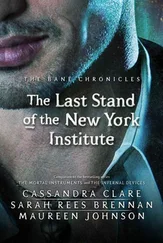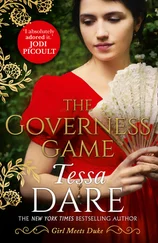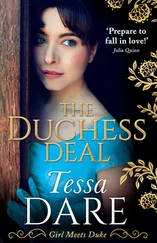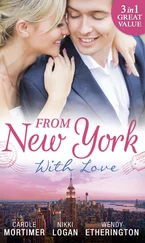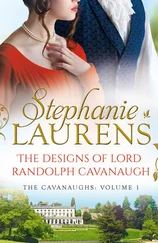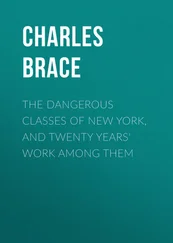“I started in 1953 with Magazine Management and stayed until 1965, but I never did get formally offered the job. I was given my own magazine to edit— Swank , a tepid harbinger of what girlie magazines were to become—then I was put in charge of four other magazines the company owned, called Male, Man’s World, Men , and True Action .”
Joan Didion knew she wanted to be a writer and live in New York after her stint as a guest editor at Mademoiselle , the summer after her junior year at Berkeley. When she returned to the University of California, she entered a Vogue magazine contest for college seniors, which would bring her back to New York if she won it, and she did.
“The prize was your choice of a two-week trip to Paris,” Joan recalls, “or a thousand dollars in cash and an interview for a job at Vogue . I took the money and the interview. The day I was interviewed I had a fever of a hundred two, but I got the job. I wrote promotional copy, merchandising copy—the kind that was sent to stores as advertising support. I’d sit there and think up things to write, like ‘ Vogue says pink.’ I threatened to quit and take the job of college editor of Mademoiselle , so then Vogue put me in the features department, mainly writing captions. I didn’t get to write any articles until some writer who was assigned to do a piece on jealousy didn’t come in with it, and it was already on the cover. I wrote the piece and they liked it enough to give me a byline, which wasn’t part of the deal. This piece turned out to be popular, so I got to write others like it.”
When the future novelist and screenwriter John Gregory Dunne got out of the Army in September 1956, he went to New York to try to get a job on a magazine. The problem was, he says, “I had never published anything, and I didn’t even write for my college paper or literary magazine at Princeton. I wanted to be a writer in the sense that I wanted to have written . I had a box of story ideas, and a completely plotted-out novel about a movie director. I had never met a movie director and I hadn’t the remotest idea of what one did. I didn’t actually write. I would sit and make notes, write down ideas, and I had the title and the first line of my novel. It was called Not the Macedonian , and the opening line was ‘They called him Alexander the Great.’”
Unlike Joan Didion (his future wife), John Dunne hadn’t won any magazine contests, and unlike me, he had no manila folder of clippings, so he used his imagination. “I went to the out-of-town newsstand in Times Square,” he remembers, “and got a Colorado Springs newspaper. I’d been stationed at Fort Carson in Colorado, and I remembered the paper from Colorado Springs didn’t run bylines. I got back issues and cut out stories and fabricated a portfolio. I figured the paper was far enough away so no one would check. I went to an employment agency and they called the paper. It was a horrendous moment. But the portfolio landed me a job through another agency, at a magazine called Industrial Design . It was an artsy-craftsy publication on East 50th Street, across from St. Patrick’s. I got a job as a writer—never having written diddly—based on this spurious portfolio. I was getting $100 a week. When you crossed from $70 to $100 a week, that was big. And I cut the mustard. I began writing articles the magazine liked and published. By ’59 I had a real portfolio of stories, and I went on to Time magazine.”
Meg Greenfield had some help in getting her first jobs in New York from friends she’d met in England and Italy after graduating from Smith. She had gone to study at Cambridge, because one of the leading literary critics of the day, F. R. Leavis, was teaching there, but just as Marion Magid, at Barnard, discovered that “Trilling was for the boys” at Columbia, so was Leavis only for the boys at Cambridge.
“I went there for Leavis, but they didn’t let women be tutored by him,” Meg explains. “You had to go to a women’s college.” She did, however, meet and become friends with some of the American boys who were studying with Leavis, like Robert Gottlieb, Norman Podhoretz, and Daniel Ellsberg. “When I came back from Europe to live in New York, Bob Gottlieb called and said there was a woman where he was working at Simon and Schuster—he’d just started there—who was helping set up a Volunteers for Stevenson headquarters, and there were lots of openings. I was given a volunteer job filing cards. If you were minimally intelligent and diligent, you were valuable. I went to my boss after several weeks and said I noticed that on some of the cards the word ‘Negro’ was written in big letters beside the name. I wasn’t an expert in these matters—I was just a grad school dropout—but I felt this was not the right thing to do. I said, ‘If I were to come in here and find “Jew” written beside my name, I’d be upset.’ Well, this nice sort of socialite lady said, ‘You’re absolutely right, dear. Make all new cards for these people, and instead of “Negro,” just put a capital N beside their names.’ I should have known right then Adlai didn’t have a chance.
“I was later promoted to a paying job as director of research, presiding over the clipping files. My first regular job was filing clippings for The Reporter . I got my job there not just because of my experience filing for the Stevenson volunteers, but because Claire Sterling, the Reporter ’s foreign correspondent who I met in Rome, wrote to the managing editor, saying something like, ‘This young woman hasn’t done anything yet, but she’ll be good.’ While I did my filing at The Reporter , I worked on an article about Nixon. It took me about six months to write and was called ‘The Prose of Richard Nixon.’” This brilliant satirical piece got her promoted to staff writer.
Most of my friends and I lucked out in the first jobs we got. Even if they didn’t lead to something better, most were entertaining. Ann Montgomery was hired through an employment agency as a receptionist for the New York City Anti-Crime Commission: “We kept track of which restaurants the Mafia people went to eat in.”
There were also just plain lousy jobs, ones that were not what they promised. After graduating from Barnard, Jane Richmond was thrilled to work in an office that purported to be a literary agency, but it turned out to be more like a sweatshop. “There were forty women in a room rewriting people’s novels,” Jane remembers. “I was rewriting a book by a woman who had been a rumrunner during Prohibition. A lot of the writers were black girls who had been English majors and couldn’t get a job in publishing. So the man who owned this agency said he was a great liberal by hiring them. He charged the clients fees for rewriting their work, and then I learned he never even sent the manuscripts out to publishers, but for another fee published the books himself. It was really a vanity press posing as a literary agency. He used to pay us in coins, and had us hold our hands out like supplicants, then he would break these packages of coins into our waiting hands. When I told him I was quitting he was furious, and he actually told me, ‘You’ll never work in New York again.’”
I felt that my friends were savoring the daily challenge and adventure of Manhattan—not to speak of the nightly romance—while I was trudging the tree-lined, somnolent streets of suburban Princeton, covering sewer commission meetings and the local police courts (traffic violations were the hottest crimes) and ferreting out the latest rezoning ordinances of the town council, returning at night to the flocked-wallpaper prison of my nook in Mrs. Mulford’s roominghouse. I took the commuter train from Princeton Junction into New York every weekend to stay with my friend Ted Steeg and his roommates on West 92nd Street, and made romantic forays with them into the Village or to the jazz clubs on West 52nd Street.
Читать дальше

